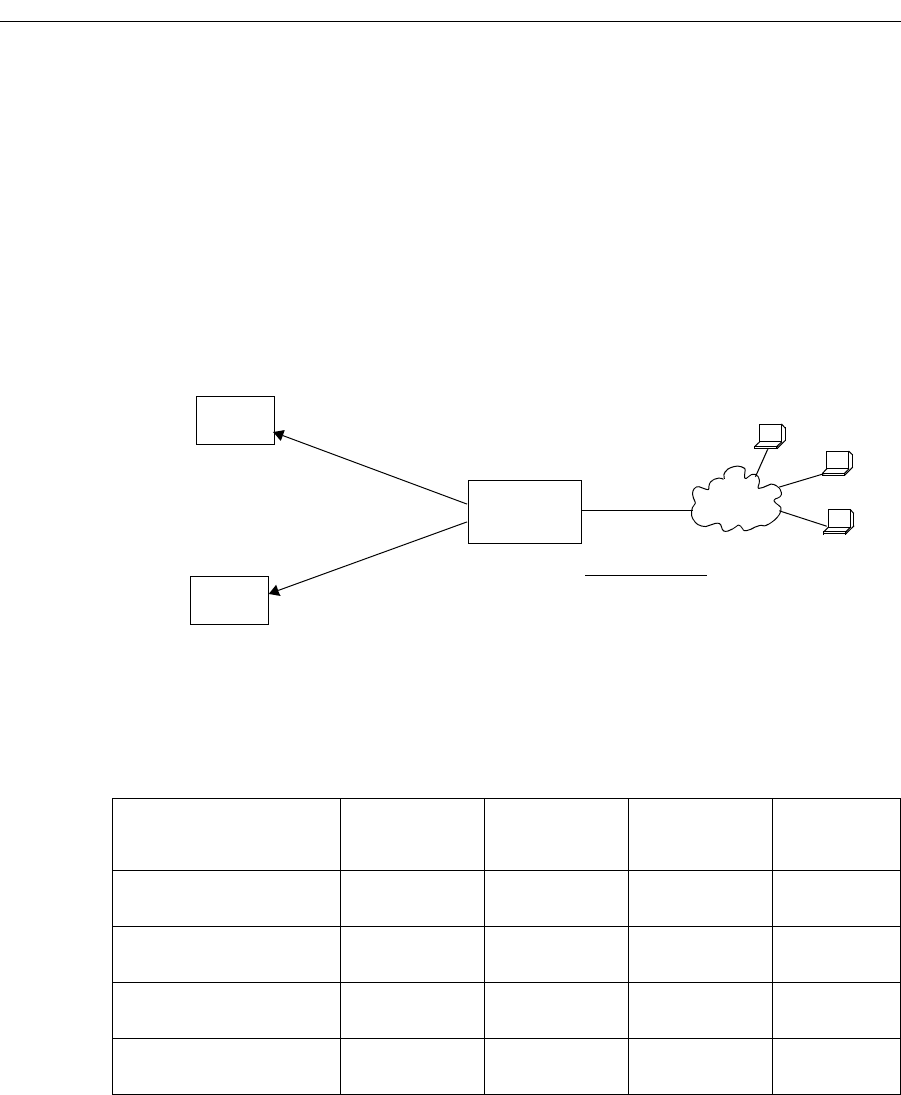Network Router User Manual
Table Of Contents
- Notices
- Contents
- About This Manual
- Introduction
- Hot Swapping Line Cards and Control Modules
- Bridging Configuration Guide
- Bridging Overview
- VLAN Overview
- Configuring SSR Bridging Functions
- Monitoring Bridging
- Configuration Examples
- SmartTRUNK Configuration Guide
- ATM Configuration Guide
- Packet-over-SONET Configuration Guide
- DHCP Configuration Guide
- IP Routing Configuration Guide
- IP Routing Protocols
- Configuring IP Interfaces and Parameters
- Configuring IP Interfaces to Ports
- Configuring IP Interfaces for a VLAN
- Specifying Ethernet Encapsulation Method
- Configuring Jumbo Frames
- Configuring Address Resolution Protocol (ARP)
- Configuring Reverse Address Resolution Protocol (RARP)
- Configuring DNS Parameters
- Configuring IP Services (ICMP)
- Configuring IP Helper
- Configuring Direct Broadcast
- Configuring Denial of Service (DOS)
- Monitoring IP Parameters
- Configuring Router Discovery
- Configuration Examples
- VRRP Configuration Guide
- RIP Configuration Guide
- OSPF Configuration Guide
- BGP Configuration Guide
- Routing Policy Configuration Guide
- Route Import and Export Policy Overview
- Configuring Simple Routing Policies
- Configuring Advanced Routing Policies
- Multicast Routing Configuration Guide
- IP Policy-Based Forwarding Configuration Guide
- Network Address Translation Configuration Guide
- Web Hosting Configuration Guide
- Overview
- Load Balancing
- Web Caching
- IPX Routing Configuration Guide
- Access Control List Configuration Guide
- Security Configuration Guide
- QoS Configuration Guide
- Performance Monitoring Guide
- RMON Configuration Guide
- LFAP Configuration Guide
- WAN Configuration Guide
- WAN Overview
- Frame Relay Overview
- Configuring Frame Relay Interfaces for the SSR
- Monitoring Frame Relay WAN Ports
- Frame Relay Port Configuration
- Point-to-Point Protocol (PPP) Overview
- Configuring PPP Interfaces
- Monitoring PPP WAN Ports
- PPP Port Configuration
- WAN Configuration Examples
- New Features Supported on Line Cards

Chapter 17: Web Hosting Configuration Guide
242 SmartSwitch Router User Reference Manual
Virtual IP Address Ranges
ISPs who provide web hosting services for their clients require a large number of virtual
IP addresses (VIPs). The load-balance create vip-range-name and load-balance add host-
to-vip-range commands were created specifically for this. An ISP can create a range of
VIPs for up to an entire class C network with the load-balance create vip-range-name
command. Once the vip-range is in place, the ISP can then create the corresponding
secondary addresses on their destination servers. Once these addresses have been created,
the ISP can add these servers to the vip-range with the load-balance add host-to-vip-
range command. These two commands combined help ISPs take advantage of web
servers like Apache which serve different web pages based on the destination address in
the http request. The following example illustrates this:.
Router
S1
10.1.1.16 www.computers.com
10.1.1.17 www.dvd.com
10.1.1.18 www.vcr.com
Internet
Web requests:
207.135.89.16 www.computers.com
207.135.89.17 www.dvd.com
207.135.89.18 www.vcr.com
S2
10.1.2.16 www.computers.com
10.1.2.17 www.dvd.com
10.1.2.18 www.vcr.com
...
...
...
10.1.1.50 www.toys.com
10.1.2.50 www.toys.com
207.135.89.50 www.toys.com
Group Name Virtual IP TCP Port
Destination
Server IP
TCP Port
www.computers.com 207.135.89.16 80 S1: 10.1.1.16
S2: 10.1.2.16
80
www.dvd.com 207.135.89.17 80 S1: 10.1.1.17
S2: 10.1.2.17
80
www.vcr.com 207.135.89.18 80 S1: 10.1.1.18
S2: 10.1.2.18
80
www.toys.com 207.135.89.50 80 S1: 10.1.1.50
S2: 10.1.2.50
80










